Royal Air Force Typhoons working with French Rafale and US F-35 jets practised responding to an attack on their main operating bases.
The RAF say here that the fighter aircraft were conducting missions together as part of Exercise Atlantic Trident when they were informed mid-air that their home bases had been denied and they were to disperse and relocate to RAF Leeming, Yorkshire.
“After successfully relocating to a remote corner of the airbase, they established secure communications with HMS Queen Elizabeth and HMS Diamond to activate UK F-35s to provide support, and connected with Command and Control Centres on the ground and in the air to receive tasking orders; including counter-air missions to protect the Carrier Support Group.
Typhoons and F-35Bs showed their adaptability, with Typhoons switching their role mid-air from air-to-air patrol to air-to-surface attack. The UK’s F-35s stayed on mission for 4 hours by ‘hot-pitting’ on the Carrier – to refuel and simulate rearming with engines running. Jets remained airborne by being air-to-air refuelled by French MRTT, US KC135 and RAF Voyager aircraft.”
Air Marshal Harv Smyth, Air and Space Commander, was quoted as saying:
“To ensure we are prepared for all scenarios, such as bases being denied or under threat, the RAF needs to be able to relocate our capabilities from their home bases to other locations. This joint UK/French exercise has been a huge success and has surpassed all expectations.”


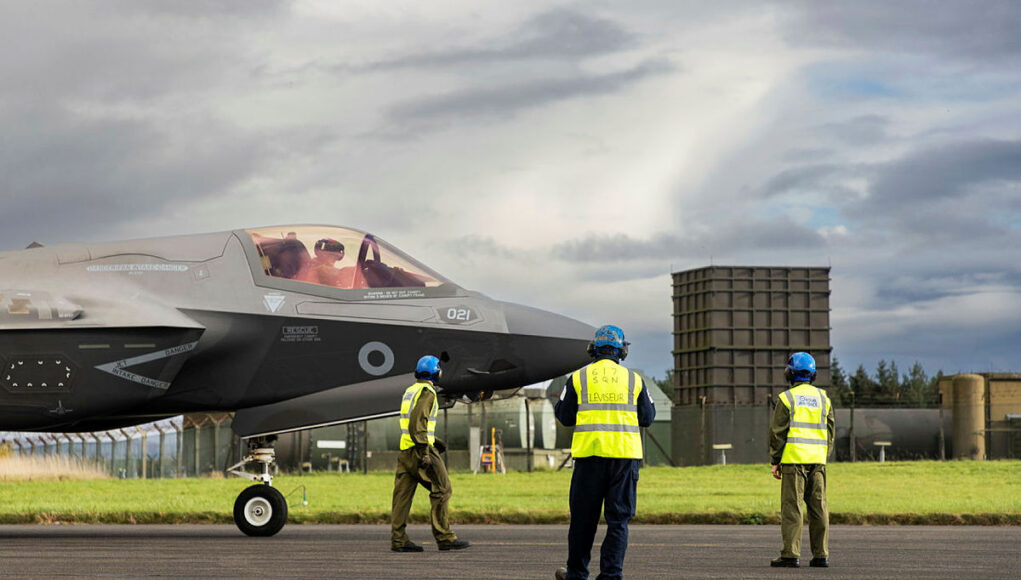
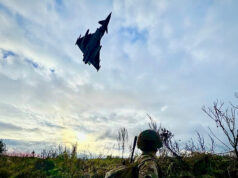
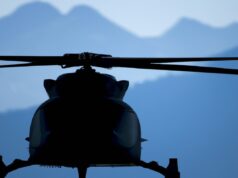
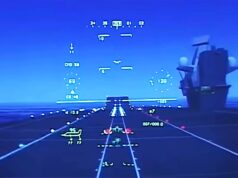
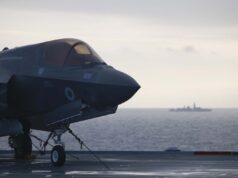

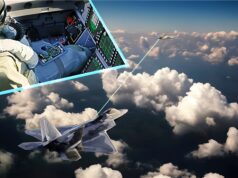
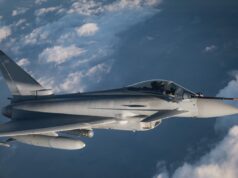
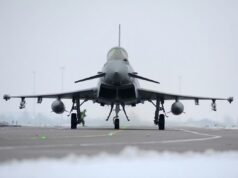
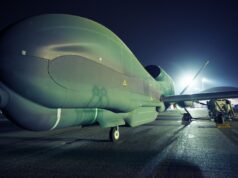


Can they also start practising having some actual GBAD on UK bases to prevent or at least mitigate any actual damage and or threat in the first place? It’s such an obvious gap… isn’t it? Any further update on Sky Sabre/CAMM-CAMM-ER for the UK?
Morning Q, was thinking much along the same lines myself. Wouldn’t it be nice to see some CAMM batteries having to ‘deploy’ to defend said bases! If we had enough that is, believe we only have 1 Regt equipped with 3 batteries as it currently stands, although @DM may well know more about that then me.
We are in a joint programme with the poles on developing CAMM-ER and I believe MR? Would be nice if we were to pursue some of these capabilities and provide some for the RAF Regt as well as the RA.
Surely the RAF Regt ditched their GBAD role many years ago – they handed Rapier over to the RA.
BTW, I am bemused that the RAF Regt primary trade is called ‘RAF Regt Gunner’ (but no sign of artillery anywhere!).
Morning Graham, yes you are correct with the RAF Regt ditching their GBAD role, my bad wording I’m afraid.
What I actually meant was that I would like them to go back to it. After all, if not airfield defence (static/mobile) then what is their primary purpose? I know like the RM they were used in part as LI, but that’s not really their role.
I was somewhat surprised that during the withdrawal from Afghanistan, the RAF Regt weren’t involved (I’m sure @Airborne has a better view on that). Something which should have been right up their street I assume!
I never knew why the Rockapes ditched GBAD, as their sole role is to defend RAF airfields (which should comprise both ground defence and air defence).
Why do you think RAF Regiment should have played a part in the withdrawal from Afghanistan (do you mean the 2014 withdrawal (end of Op Herrick) or the Service Protected Evacuation through Kabul in summer 2021 (Op Pitting) – which was not about defence of an RAF airfield.
I was referring to Op Pitting – rather poorly I suspect. As a evacuation via Kabul airport, just wondering why they weren’t part of the airport security? The task went to the paras instead….
Security of the APOD or SPOD is just one part of a Services Protected Evacuation. The US provided most of the security at Kabul Airport as they had 6,000 soldiers there. We deployed 1,000 military personnel.
https://www.bbc.co.uk/news/world-58305185
The Paras were probably at a far higher Readiness level than various RAF Regt squadrons and they have far more experience at deploying quickly into trouble spots. The Paras have Afghan experience too. Some of the Paras would have had a security role and others would have processed the evacuees.
He has a colourful view of the RAFReg. He had an outline idea for using the RAF Reg Sqns in a split FP, GBAD role the other day.
With hindsight a bonkers decision. But was made when the UK was fighting two Asymmetric Campaigns and we were fairly pally with both Russia and China.
The RAF Regiment’s remit is to defend airfields and dispersed sites, leaving the blue suiters to produce aircraft, thereby allowing the aircrew to do their stuff. I would say the Regiment can no longer provide that level of protection. It needs to revert back to both an air defence, as well as ground based role.
Traditionally the RA were tasked with defending UK sites from air attacks, which then went to the RAF, which subsequently relinquished it back to the RA. I believe this needs to be re-assessed.
I feel that the RAF should be primarily tasked with defending the UK’s airspace, which includes a multi-layered approach, using a combination of space, air and land based sensors that are networked and coordinated to control both air and land based effectors, i.e. aircraft and surface launched missiles. Therefore the RAF will require a long range Bloodhound replacement, that can intercept not only aircraft and cruise missiles, but also ballistic threats. In the past the Bloodhound missile units were ground based squadrons, not RAF Regiment.
Unlike Japan which is faced by both Russia and China across the sea who are justifiably concentrating their air defence systems on additional destroyers. I feel we would be better suited to a land based system. That perhaps uses a land based version of what’s used on our ships including an exoatmospheric interceptor.
This I feel should still be the case. The Regiment is tasked with protecting these sites and airfields etc. Using VSHORAD/SHORAD using a combination of self-propelled anti-aircraft gun (SPAAG) and a mobile SAM system, based on the Boxer vehicle. Whilst the RAF itself reinstates dedicated SAM units.
The RA is therefore tasked with protecting the Army wherever it may be. But as shown by the War in Ukraine. Local area defence is not sufficient. It requires not only a longer and higher reach, but also a cheaper means of knocking down drones. Therefore, there they will also require a combined VSHORAD/SPAAG system along with a theatre SAM system similar in capability to SM6/THAAD.
As the start of the Ukraine War instantly highlighted. UK based air defence systems must be at operational status 365 days of the year, as per QRA. Even when Russia was building up its forces for “Exercises” with Belarus. Along with politicians all around the World saying Russia was purely sabre rattling. These units must be ready for any eventuality and surprise attack, Ukraine’s were not! As part of the UK’s layered systems, backing up the aircraft providing the stand-off defence. Or the first line of defence against ballistic threats.
Very interesting post 👍 🇬🇧
Thanks for all the background information here. If a conflict with Russia ever broke out it’s important that the UK and Europe can defend themselves substantially from any sub launched missiles in the north, north west, north east and all the siloed missiles in Kaliningrad. With the later does the West know exactly what is there? Hope there are plans to deal with it. Is it a conventional and nuclear mix or just the later?
In addition to the Aster/CAMM on the T45s I wonder if they’ll upgrade the CAMM to CAMM-ER on the T26, T31s or have a mix?
A mix of CAMM types is very likely.
The bigger heavier missile won’t be as good close in as the smallest lightest version.
Does depend how long it takes to accelerate to max speed. However, if you want range you don’t want to burn a large % of propellant to accelerate. That is set against reducing overall time-to-target. So, obviously, how that trade off is worked is a closely guarded part of the missile parameters.
So if I was taking random bets I would say that T31 will have standard CAMM for point/close area defends and some of the long range flavours in the VLS. Then add the canister NSM. Then add some high end FCAS (or whatever it is called this week).
I’d see T31 and T26 carrying a hi/lo mix of missiles. Some things don’t need a Gucci missile as when the target is down….it is down…..that way we can afford sensible numbers of missiles and some seriously high end missiles too.
Evening SB, the latest image of the T31 was showing 4*MK41s which I didn’t think supported the standard CAMM but maybe will hold the CAMM-ER, maybe two per slot DaveyB was saying. That’s pretty useful. If a CAMM mix, would the standard CAMM remain in the 6 tube silo? We’ll have to wait and see. Still think they could add 2*MK41s to the T45s or even 2*A70 vls and not just 4*6 CAMM which could go down the sides of the Aster Asters or even on the hangar roof. And, feeling greedy and if there’s heaps of money around, get a couple of the T26 batch 2s being offered to the RAN to complement the T45s.
The CAMM tubes for T45 could be the longer ones – there is void space underneath which is a gym……
Yes. Let’s hope they really make good use of that above the gym space. I mean seriously, you should be able to move the gym somewhere else! They can do better than 24 CAMM. Also with the 2*4 NSM, they could FFBNW that space for 4*4 if they wanted to. And will Dragonfire be fitted?
Kaliningrad is one of the most watched and eavesdropped parts of Russia. It’s very likely that NATO analysts know a fair deal of what Russia has militarily there.
I would agree on the high/lo CAMM mix on both T26 and T31. Both ships have radars that can see at least 200km. As well as mounting them as high as possible to extend the radar horizon. The standard CAMM can easily reach that horizon. But it does make sense to include a longer range variant. As the further away you can meet the interception, gives the ship more time to send a second if the first CAMM misses.
For a standard CAMM farm you will need additional depth to house the CAMM-ER canister, or take the risk of them sticking up further. In a standard length Mk41, there would be no length issues, again it would be the same for the strike length Mk41.
With the announcement of the Polish MBDA deal. They showed the first “true” images and models of the CAMM-MR. This is if a similar length to the ER version, but includes a fatter main body Ali g with mid-body strakes. Hence the additional range. Images also showed that only two missiles would fit a Mk41 cell.
CAMM-MR is now more in keeping with SM2 performance wise. I wonder through spiral developments, will CAMM get Aster’s mud-body reaction jets? This give the missile a higher pk value, especially against manoeuvring ballistic targets.
Thanks Davey for another good reply read. The UK has a lot MK41s to fill on the T26 and T31s so there must have already been some serious thinking and decisions made as to what goes in them. A few more T31s in the fleet would be useful, to be in more places in numbers, protect international shipping and trade lanes, act as CSG picket ships, and wouldn’t cost the earth. It’s going to be interesting to see what happens with the RAN down here, growing and muscling up!
You don’t mention exeditionary or permament overseas air bases. I saw the RA man the Rapiers at MPA some years ago, the Rockapes having manned them years before. I don’t recall what we had at Camp Bastion now.
I agree that we need greater investment in AD and your suggestions have a lot of merit.
The RAF Regiment suffered the same fate as many other branches of the Military after ‘Options For Change’ and the so called Peace Dividend.In simple terms it was gutted,to the point of near disbandment,popular opinion was the BA had no interest in taking over it’s roles,and never had,so it has survived in a much reduced capacity.
Not sure the Rockapes are that small – 1850 regs, 570 reservists to do ground defence of a very small number of RAF bases.
The BA (Royal Artillery) picked up their role of manning the Rapiers at MPA – not sure if they picked it up elsewhere.
They also protect deployed assets.
Regular Sqns join with RAuxAFReg Sqns and RAF Police to form Force Protection Wings when an EAW deploys
These wings are aligned to various areas of RAF force capability, Typhoon Force, Lightning Force, ISTAR force, ATR force all have FP Wings.
The RAF SHF doesn’t, but that works directly with the army and has other ground elements supporting it.
Yep, I was aware. I meant RAF bases wherever they are, including EAWs. I was at Bastion with 904 EAW, I think. I was there when an RAF FP Wing took over from our FP Company of The Rifles, for defence of Bastion as a whole, not just the airfield.
Ok, mate.
Look what they had in RAF Germany , all lost – https://en.wikipedia.org/wiki/Royal_Air_Force_Germany
Paul, that was during the Cold War. Not so surprising that the RAF would come out of Germany soon after the Cold War ended and the Warsaw Pact and Soviet Union collapsed – as per the Options for Change review.
I had few objections that the army drew down from a Corps of (once) four divisions and a 5,000-strong brigade in Berlin. A post-Cold War army established strength of 120,000 regulars with just 386 tanks was about right.
Said many a time Sky Sabre in Poland needs to be back in UK now that Poland have Beef there Defences up .🙏
Would be nice I know, but still to few/little. As I understand the SS GBAD regiment has three batteries each with two giraffe mobile radars and 4-6 launchers, so theoretically we could defend 6 places, as each set of launchers requires a radar system for tracking.
If the army can’t supply the coverage, other than £/ people, can’t understand why the RAF Regt don’t take up the role again?
Who knows mate with HMG 🙄
It’s a grey area.
My belief was 4 fire batteries, each of 2 Fire Groups. Each FG has 1 radar, 1 control vehicle, and 3 launchers.
Which fits your description mate.
Yeah I think that’s right with 1 FG being in Poland and another in the Falklands
There are 4 batteries each of 2 Fire Groups with 3 launchers and a radar each. One Fire Group is in the Falklands and another is in Poland.
It was sent there as a part of a very good sales pitch.
‘We have something that is very good and relatively cheap….would you like to work with us and develop this further?’
And it has meant that the development of the next generation is well underway securing a great product lineup and meaning we can afford to make and deploy missiles.
Let’s hope HMG do go the next step 👍
Just another glaring gap in the defence structure, all this sabre rattling but nothing actual to back it up.
GBAD capability should in my eyes be no.2 after Nuclear deterrent.
Won’t argue with that one 👍
Don’t forget CAMM-MR
UK armed forces are gearing up for something big coming along some time soon.
Possibly. Or this is just prudent considering the current geopolitical situation. Would be better to get an UOR going for a crash programme of say 36 land based phalanx systems and approx 12 batteries of land Ceptor. That should provide a fledgling ability to offer a defensive response for key military bases within the UK land mass and abroad.
What’s the state of rapier systems? Do we still have any that might be useful until HMG can get their finger out and sort out this mess.
Mr Bell, Rapier is long gone😥
Land based Phalanx system’s can’t see it happening but there again better than nothing.More Sky Sabre Batteries hope so , just hope HMG have a change of heart by putting Money in Defence, he’s hoping 🍺
Even when it wasn’t antique rapier left a lot to be desired
Hard to see any evidence of that! Unless they are planning a big parade for the kings birthday…
It’s not Spam! I’m just fixing my spelling!
My post reply to Deep here disappeared but everyone here has pretty much said the same.
Dispersal is all well and good but having the ability to shoot down incoming cruise missiles, long range kamikaze UAVs and even short or intermediate range ballistic missiles is much more important.
They can disperse as much as they want , sooner or later the dispersal site will be discovered and attacked. Dispersal probably would only keep the RAF in the fight for a few weeks longer against a sustained attack.
GBAD is becoming an urgent operational requirement. Land Ceptor, radar guided guns/ phalanx type systems and containerised Aster 30NTs are the only obvious answer.
After all the Russians failures in neighbouring Ukraine. Do you really still believe the can genuinely threaten UK land bases? With Nuclear weapons, yes, anything else, I think is stretching the realms of credibility. We know full well what they can and can’t do.
Should have gone in with Patriot when the Bloodhounds were decommissioned in the late 90s. We’ve not operated anything more then SHORAD for nearly 30 years now.
Patriot only if 🤔 and SHORAD for 30 years Crazy 😖
It’s a lot of money saved by not having patriot for 30 years.
If patriot was to be funded out the budget what would have been cut?
No carriers? No tranche 3 typhoons? No meteor,asraam, brimstone?
The air defence does need buffed up a bit but the U.K. is way down the target list. CAAM purchases seem to be the best idea and cheapest. With the new developments coming the obvious answer is to practice protecting key assets while not deployed abroad. These launchers need to be paired up with shorad and guns systems to be better protected.
No air defence is 100% effective unfortunately
If Russia or China was to start a war with a nato country I don’t think it would be the U.K. first.
And obviously no UK industry involvement, the US wouldn’t share development of Patriot systems so we would be handing over billions to the US economy.
Patriot was considered by the MOD and RAF as a Bloodhound replacement but rejected as having inadequate range performance. I have posted the reason why in more detail above.
Sadly there was a missed opportunity with the land based Sea Dart system, which was called Guardian. It was in development in the 1980’s, to replace Bloodhound, but got cancelled as part of a series of other defence cuts. The missile used was the Sea Dart 2, which had the bigger 1st stage booster plus other improvements to increase range to over 50 miles and increase cruise speed to nearer Mach 3. Other developments for this missile were the ability of a hot vertical launch and a fitted into an environmental sealed container, that doubled as the launcher.
Patriot was considered as well but rejected on the basis that the 43 mile range of the early MIM-104A (56 mile with PAC-1) made it a totally inadequate replacement for the 120 mile range Bloodhound Mk2.
I have actually had some interactions with someone who operated Bloodhound and was involved with studies into its replacement. MIM-104 Patriot was actually considered for a while in the 80s but rejected as having a totally inadequate performance to make it a worthwhile Bloodhound replacement.
What people fail to realise when talking about Patriot especially the early variant is this…it’s not a long range SAM system! In actuality it is a medium range system intended as a replacement for the MIM-23 HAWK. The range of the MIM-104 was 56 miles whilst Bloodhound had a range of 120 miles! Bloodhound needed that range as it was intended to engage targets (Soviet bombers) as far as possible from dropping their payload. The MIM-104 simply didn’t have the range to make it useful against that kind of target. The MOD and RAF decided it was better to invest in Nimrod AEW, Tornado F-3 and Skyflash as a solution to the problem.
Of course then was then and now is now, going on events in Ukraine a proven system like Patriot PAC-2/3 is showing its worth intercepting Russian cruise missiles including hypersonics before they get to their target but without the benefit of hindsight the decision not to buy Patriot did make sense in the 80s.
You need to work for the MOD 😏 🇬🇧
I think we all here do!! Just think what would get done! Lol. 😁
Specially down the pub 🤗 🍺🇬🇧
I wonder how many former RAF bases around the country still have a runway that could take fast jets in an emergency?
Was just thinking the same, delicate lil aircraft. Hardly like rugged Jag, Harrier types.
Long gone 🙄 sadly
Got all nostalgic about Jags all of a sudden. Fantastic mud movers. Simple, light-weight, kinda like the A-4, but with those tiny afterburning adours. With a couple of AIM-9Ls & those 2x 30mm, I’m sure they could have furballed as well. Remember being woken up at Lossie every morning by a pair of Jags 🙂
F35B is designed to operate from aircraft carriers and rough airfields. It is anything but delicate.
And way less capable than the F35.
Correct and how many have Houses on them 🤔 🏠 🏡
Too many !! We need to assess how many could still be used or made operational in a short space of time and ensure they dont become council
That’s a very good idea ,maybe to hard for the government to work out 👍
Council Tax “Cash Cows”
🍺
If you didn’t know, its nickname is the Battle Penguin!
Fortunately. The aircrew who fly it, and the engineers who maintain it think its outstanding and absolutely world beating.
Lots.
St Mawgan.
Lyneham.
Odiham. * still Chinook.
Benson. * still Puma, Chinook.
Chivenor.
Woodbridge.
Honington
Wattishsm.
Leeming.
Kinloss.
Leuchars.
There are others on MOD estate, but you get the gist.
Wittering and RAF Valley as well.
RAF Woodvale and RAF Mona still have runways but are still used for lesser operations. They will need substantial upgrades.
Or they can disperse to an area that doesn’t have a runway but at least a level paved surface and stick a ski ramp there. I guess they would have to move it in accordance with the wind direction. How much does a ski ramp cost?
They are already well dispersed, with only a few platforms and bases left, they cant disperse any more……Sorry just being a nob lol. On a serious note, skills and drills well practiced before, now lost, but making a comeback. Now please can we look at defending the real estate we have got left, by more GBAD both SHORAD and higher, with also an eye to low level anti drone capability!!!!! I see Poland are taking the air threat seriously, with their CAMM ER orders, can we at least make more of an effort please. I know there has been an extra Bty formed from 12 Reg? but that’s for the Divisional formation (cough cough Division lol) but the requirement for GBAD of fixed locations, even using mobile platforms, is becoming higher and higher on the “to do” list. Cheers.
With some on the carrier, Cyprus, baltics, training etc it would be a tough job to wipe out the entire airforce in one strike. Hopefully 😂😂
Top man 👍 very well said ,now all we need to do is get you the job has Defence Secretary AB 🍺 🇬🇧
Yes, I’ll second that!
Army SHORAD is to triple in size and MRAD to double. I have no idea how that’s going to happen but presumably CAMM batteries will be enlarged.
Defence of raf bases is an raf reg job. If the MOD believe raf bases need air defence (which they do) the RAF should invest in CAMM to bring back AD to the raf reg. Army AD should be able to deploy instead of being stuck up in Scotland.
The RAF is actually a lot less well dispersed than in the Cold War. Lossiemouth for example has 4 frontline Typhoon squadrons, the entire P8 force, and will have the entire E7 force. Most bases back then had 2-3 fighter squadrons and that’s it.
Correct. Though I’d not read SHORAD is to triple? 12RA has formed a 4th Battery.
Yes apparently SHORAD is to triple. CAMM batteries are supposed to expand so presumably it’ll be the same with HVM batteries. I don’t know whether SHORAD tripling is just in relation to LML/Starstreak, or SHORAD as a whole i.e. new systems like Terrahawk.
The Latter I hope.
A properly established and fully manned squadron of typhoons in Cyprus might be a starting point
Stop the chopping of 2 Squadrons in 2025 🙏